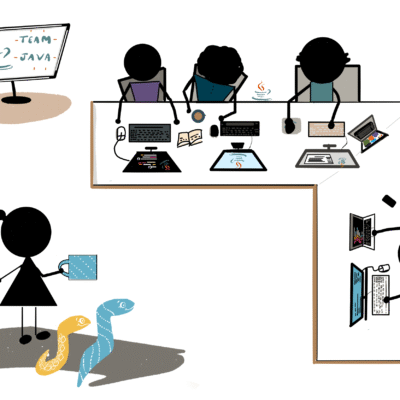Rapid advancements in artificial intelligence (AI) technologies, such as large language models (LLMs), have triggered radical transformation in insurance. While they have already reshaped how AI is used, LLMs alone are not sufficient for real-world decisioning.
Some of the standard ways insurers have used LLM-based chatbots in the past are for customer service and claims management. But agentic AI systems – which can work autonomously – expand on the capabilities we’ve seen from LLM-based chatbots.
Through agentic AI systems and the use of specific AI agents, companies can automate complex decision-making processes, streamline workflows and enhance customer experiences.
The shift from LLM-powered chatbots to agentic AI systems introduces:
- Goal-oriented behavior. AI agents autonomously determine and execute steps to reach predefined objectives.
- Multistep execution. Unlike LLMs, AI agents persist, learn and refine their decisions over time.
- Self-directed operation. AI agents work without human intervention, making continuous, dynamic decisions.
- Integration of external knowledge. AI agents combine LLMs, traditional machine learning and AI models with structured decisioning frameworks to ensure governed, explainable and trusted decisions.
Now, imagine an AI-powered ecosystem where multiple intelligent agents work together – just like a team of specialized experts. These AI agents can handle tasks like underwriting, claims processing, fraud detection and risk assessment.
This type of ecosystem represents the next step in the evolution of AI-driven insurance operations.
Let’s examine four insurance processes that stand to benefit the most from agentic AI.
1. Underwriting transforms with AI-powered decisioning
Underwriting has historically been time-consuming, requiring manual document review, risk assessment and policy customization. By incorporating vast amounts of structured and unstructured data, an agentic AI system can conduct real-time risk evaluations, ensuring more accurate pricing and policy recommendations.
- An “underwriting agent” can orchestrate data collection, analyze risk factors and suggest optimal policy terms.
- AI agents trained on medical and financial records can assess risk profiles precisely.
With this assistance, human underwriters would be free to focus on final approvals and the details of exceptional cases. Insurance companies, in turn, could benefit from significantly reduced processing times and improved underwriting accuracy.
2. Claims processing becomes more automated and efficient
Claims processing is one of the most critical customer touchpoints in insurance. AI-driven claims automation can accelerate processing times while detecting fraudulent claims through pattern recognition and anomaly detection.
An agentic AI system can:
- Automate document verification and fraud detection using computer vision and natural language processing.
- Expedite claims approvals by cross-referencing policy details and historical claims data.
- Provide real-time guidance to claims adjusters, ensuring fair and accurate claim settlements.
This approach to faster claims resolution could drive efficiency while boosting customer satisfaction.
3. Fraud detection and risk management get stronger
Fraud costs insurers billions annually. Worse still, AI makes it easier than ever to commit insurance fraud.
AI-driven claims automation can accelerate processing times while detecting fraudulent claims through pattern recognition and anomaly detection. An agentic AI system could strengthen fraud detection by:
- Deploying fraud detection agents that analyze patterns in claims data to identify anomalies.
- Using computer vision tools to detect manipulated documents or staged accidents.
- Coordinating with external databases to validate claims authenticity in real time.
By proactively identifying fraud, insurers can reduce losses and raise profitability.
4. Customer engagement improves and personalization gets more granular
Customers have ever-increasing and evolving expectations – with a universal demand for speed and personalization of products and services.
AI-powered agents can autonomously handle customer inquiries, verify documents and guide users through the policy selection process. This can reduce onboarding time and improve customer satisfaction. These agents could:
- Provide policy recommendations based on real-time customer interactions.
- Guide customers through complex processes, such as onboarding or claims submission.
- Offer proactive assistance, ensuring that policyholders receive timely updates and support.
With AI-powered chatbots and virtual assistants, insurers can create seamless, engaging customer experiences while lowering operational costs.
The road ahead: A hybrid future of AI and human expertise
As AI technology advances, the role of insurance professionals will shift. Instead of spending time on repetitive tasks, underwriters, claims managers and fraud analysts will focus on strategic decision-making, complex cases and customer interactions that require a human touch.
The key to success is balancing AI automation with governance and human oversight. Only then can insurers – and their customers – trust that AI systems are continuously learning, improving and operating within AI ethics standards and regulatory frameworks.
By embracing AI-driven innovation, insurers can unlock new levels of efficiency, profitability and customer satisfaction, ensuring long-term success in an increasingly competitive market. As AI continues to evolve, its role in shaping the future of insurance will become even more significant, making it imperative for insurers to adopt and integrate agentic AI into their digital strategies today.
If you found this insightful:
Learn how automated decisioning based on data can help your business





